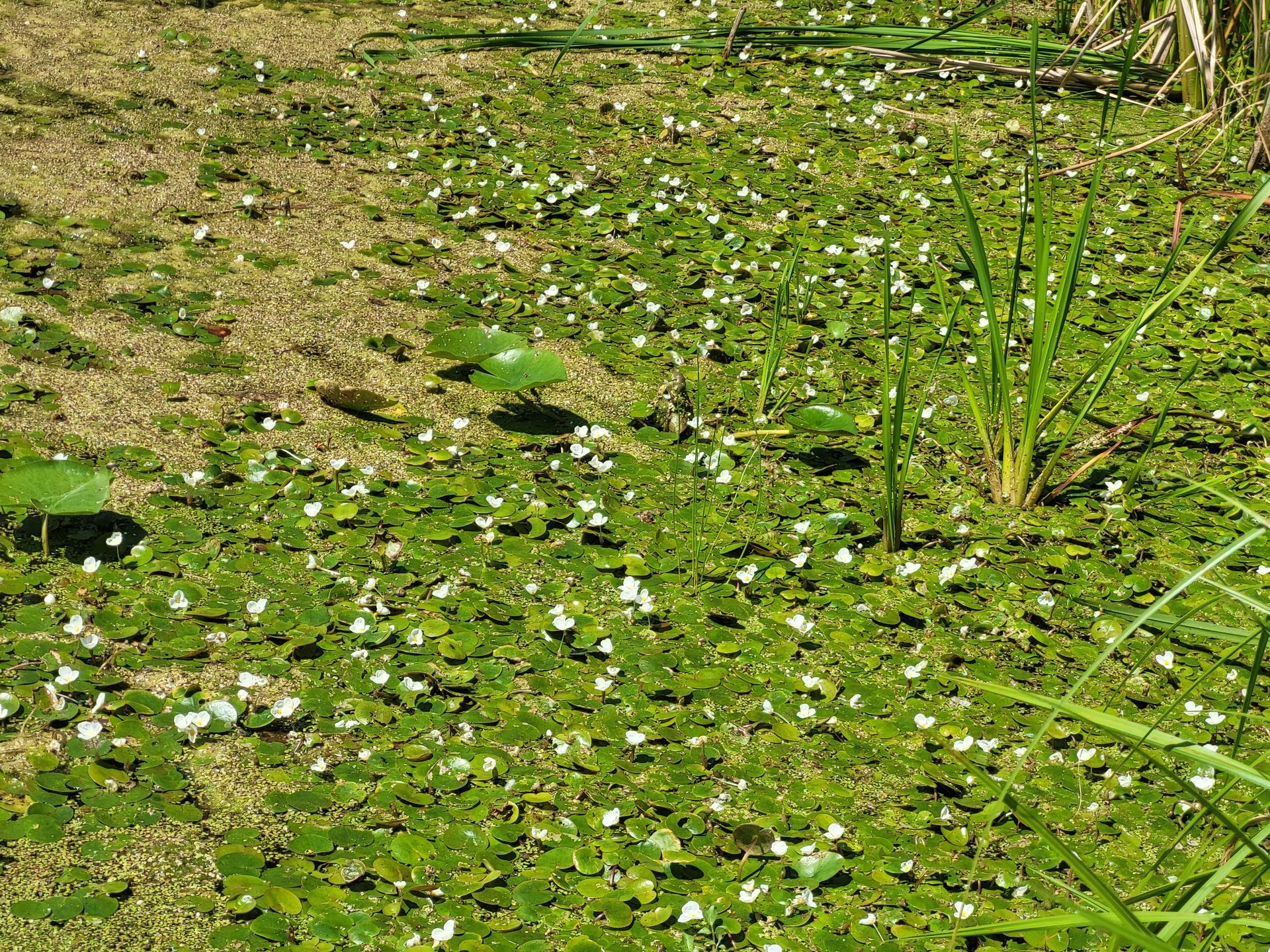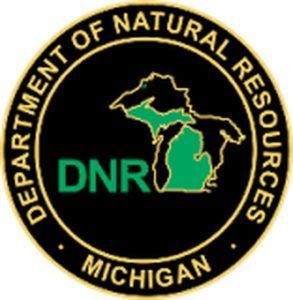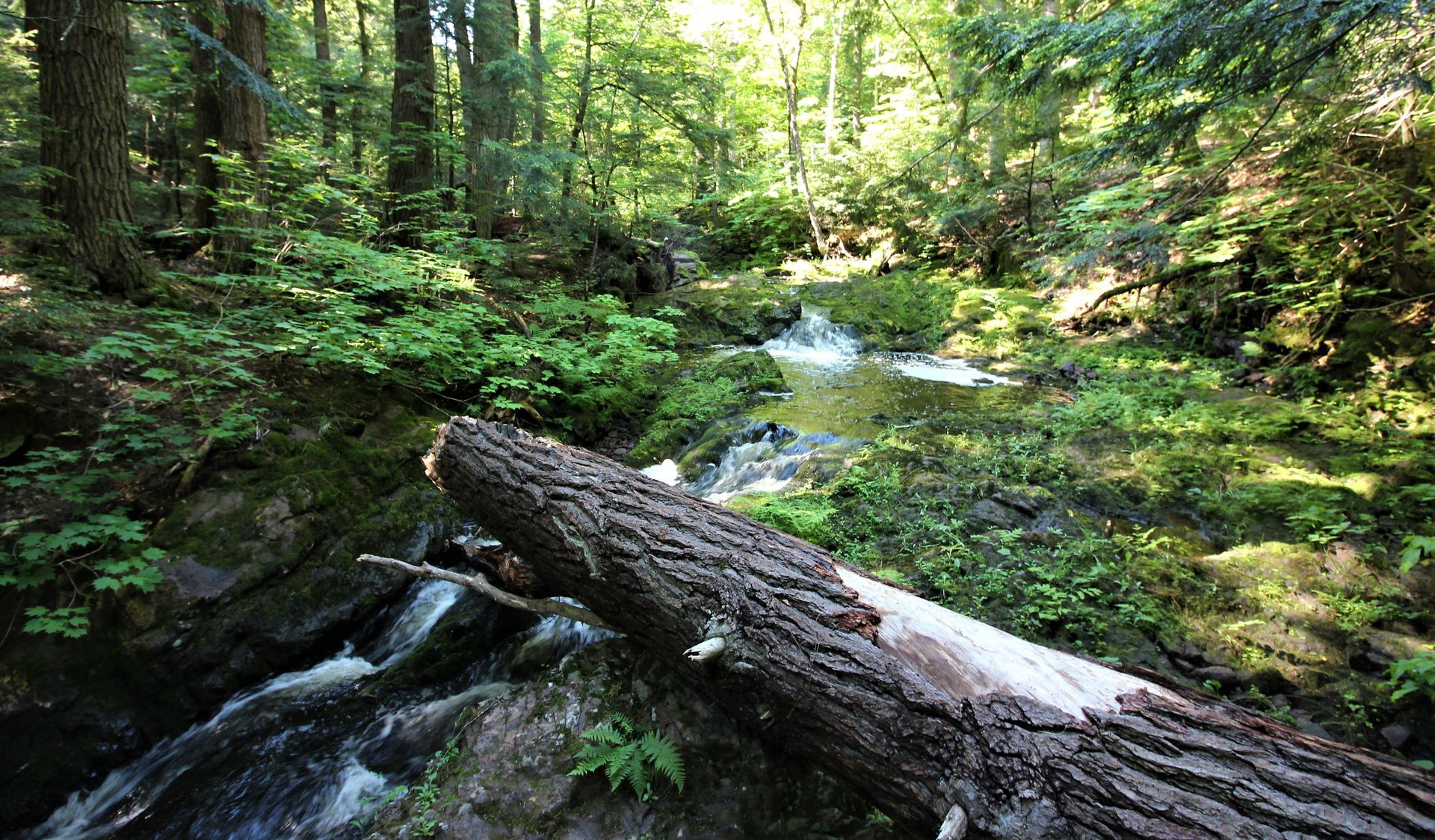Eastern Massasauga Rattlesnake
One of the best things about being an AmeriCorps member is the new experiences. From May 4th to the 6th, I drove to Camp Grayling to participate in the eastern massasauga rattlesnake survey. I had never worked with venomous snakes before, so this was a very exciting opportunity.
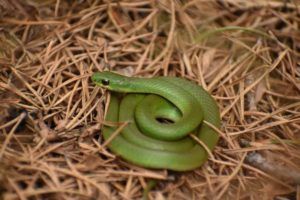
The eastern massasauga rattlesnake is the only venomous snake found in Michigan. Currently, the species is listed as threatened by the Michigan DNR. The population decline is due mainly to habitat loss and poaching. The surveys at Camp Grayling monitor the health of the population and determine if it is productive. Teams of volunteers survey different land allotments within the surveying range.
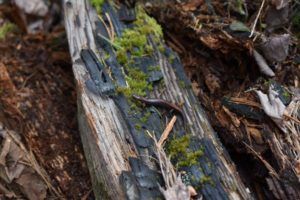
I was in the red allotment on the first day, also known as the snake dessert. The large mossy hummocks and swamp-like conditions were perfect for a hibernaculum. Unfortunately, the seven hours of scanning throughout the site didn’t find any snakes. However, it was not a loss, throughout the day our group found many amazing animals. As we looked under logs and rocks we came across spotted salamanders, red-backed salamanders, wood frogs, green frogs, green smooth snakes and garter snakes. All species I had known about but never seen in the wild before.
When the groups came back after sampling, we could peek into the lab where the snakes were being processed. When I looked in, they were measuring a large female eastern massasauga rattlesnake. After they measured, weighed and tested her for snake fungal disease, it was discovered she was pregnant. Eastern massasauga rattlesnakes are livebearers. The lab team named her Medusa.
On the second day, my group was assigned a more productive allotment. This area was dominated by jack pines. We started side by side as we moved deeper into the forest. After one hour of sampling, the seasoned surveyor found the first massasauga. It was spread out at the base of a tree speckled with sunlight. The surveyor picked it up with the snake hook and gently lowered it into a bag. After scanning for a pit tag we found out it was Medusa, the gravid female. Releasing her back, she coiled up tightly and rattled at us. The rattle is quiet and sounds like a bee.
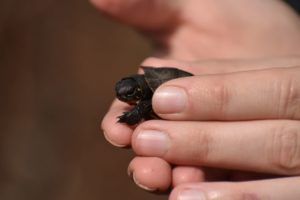 As we kept walking, one of the members found a baby turtle. It could fit in the palm of your hand. The yellow chin showed it was a Blanding’s turtle. About 20 minutes later, we found another massasauga. The little turtle became our lucky charm. When all the animals were handed off to the researchers we continued surveying. Looking down into a small pool a hexagonal pattern jumped out at me. Another baby Blanding’s turtle, a little good luck charm. Like clockwork, the team found two massasaugas afterward.
As we kept walking, one of the members found a baby turtle. It could fit in the palm of your hand. The yellow chin showed it was a Blanding’s turtle. About 20 minutes later, we found another massasauga. The little turtle became our lucky charm. When all the animals were handed off to the researchers we continued surveying. Looking down into a small pool a hexagonal pattern jumped out at me. Another baby Blanding’s turtle, a little good luck charm. Like clockwork, the team found two massasaugas afterward.
The success of the morning didn’t transfer into the afternoon, trudging through thick uneven terrain, no massasaugas were found. At the end of the day, we sifted through the wintergreen cover forest floor and discovered the smallest massasauga rattlesnake lying in a sunspot. As the team prepared it for transfer, I moved forward, and another young massasauga popped into view. Another team member besides me found another. Our long journey ended in the best way.
Besides serving as a thrilling learning opportunity, these surveys help scientists understand more about the eastern massasauga rattlesnake. The data collected sheds light on many aspects of the snake’s biology. Such as the environment they favor, where they can be found throughout the day, the concentration of snakes in an area and the ratio of females to males. This information influences the management of the species and helps create a more efficient plan.
The post Eastern Massasauga Rattlesnake appeared first on Michigan United Conservation Clubs.
Recent Posts
